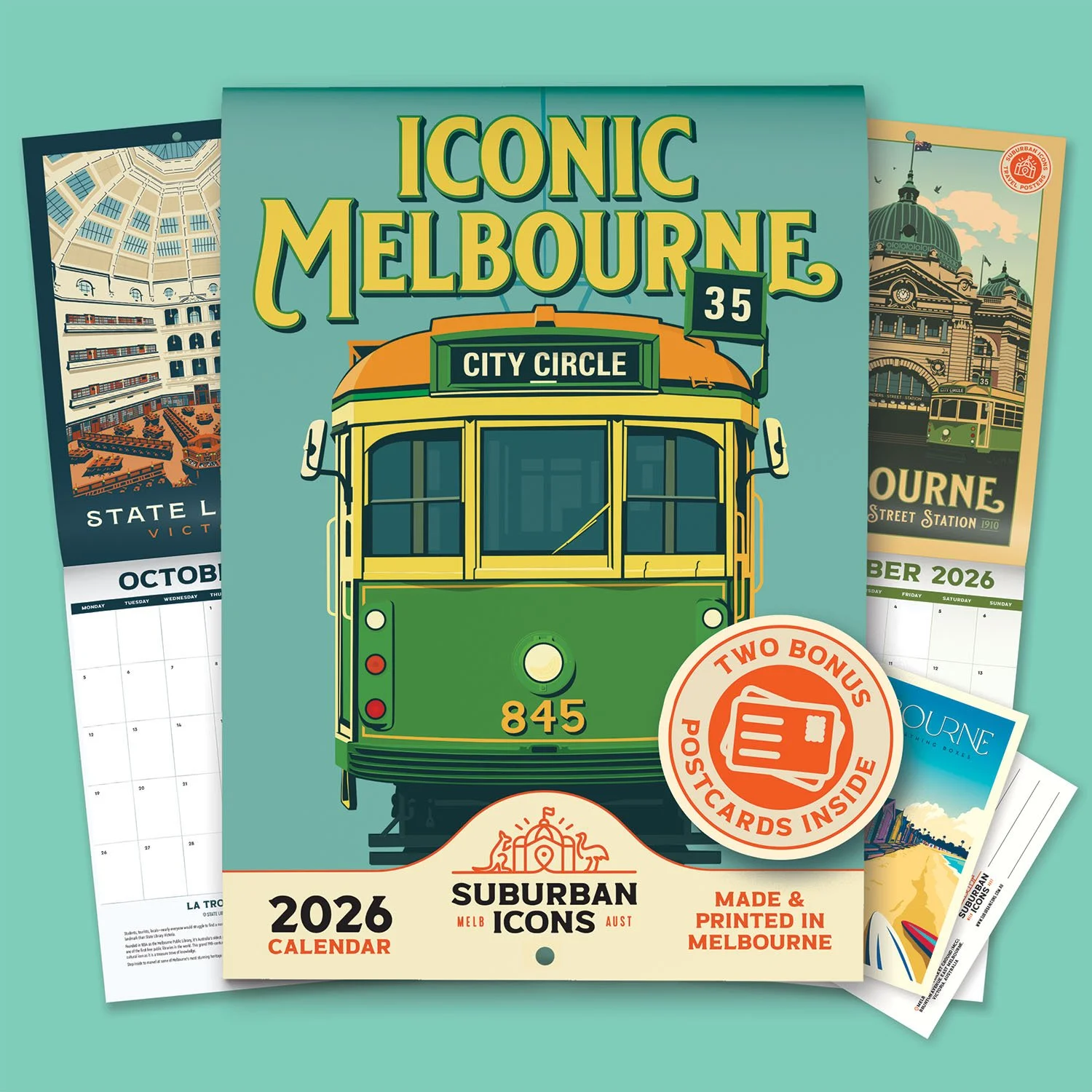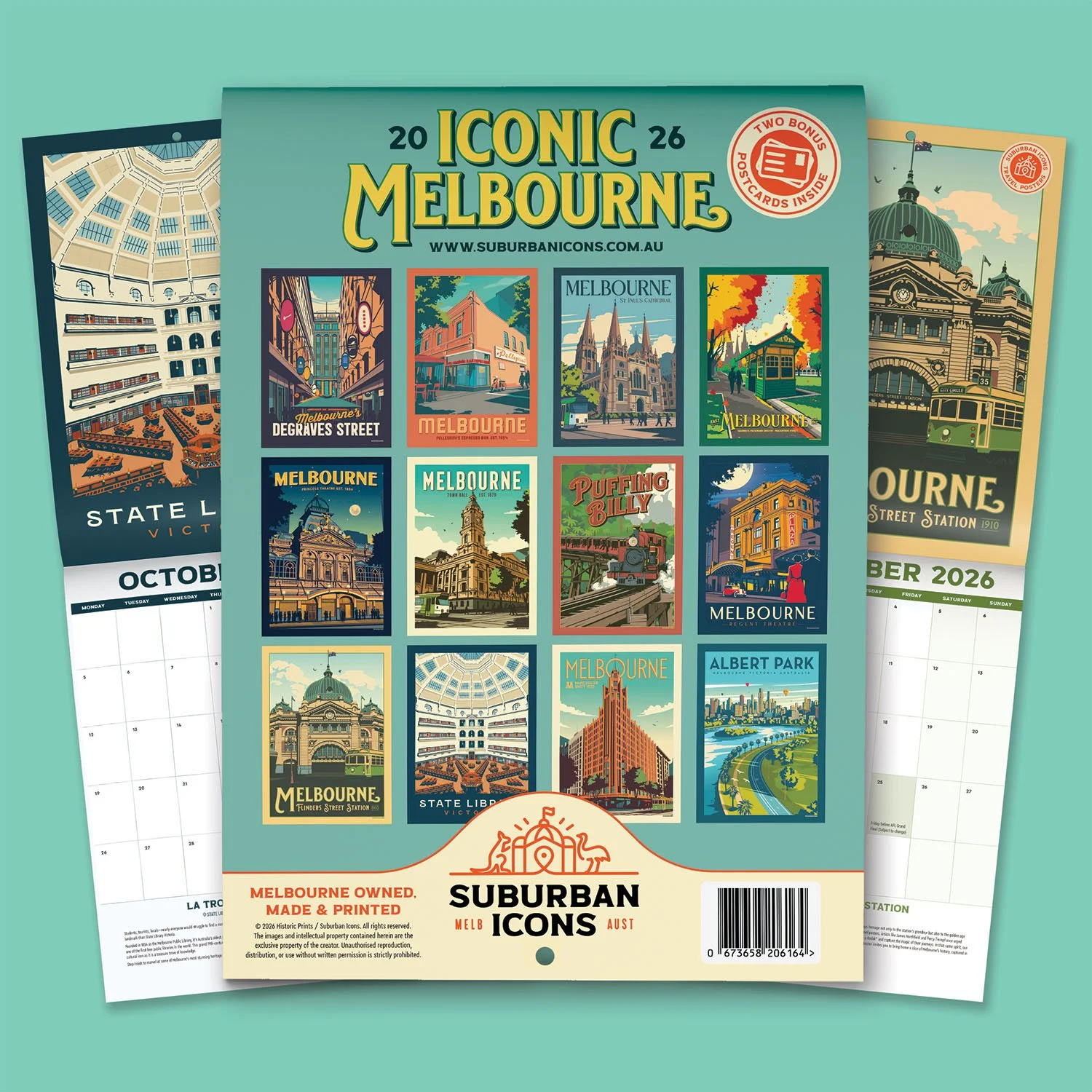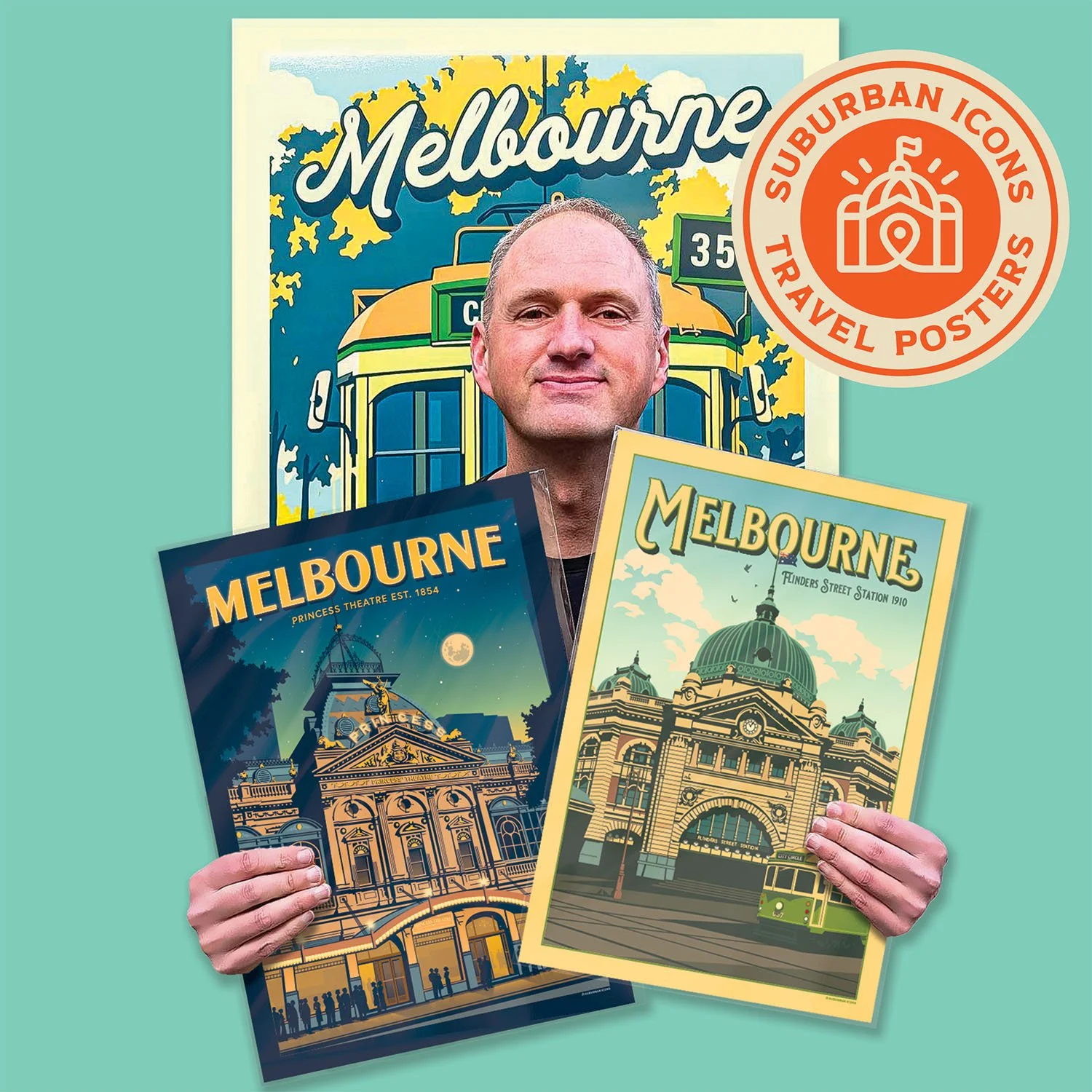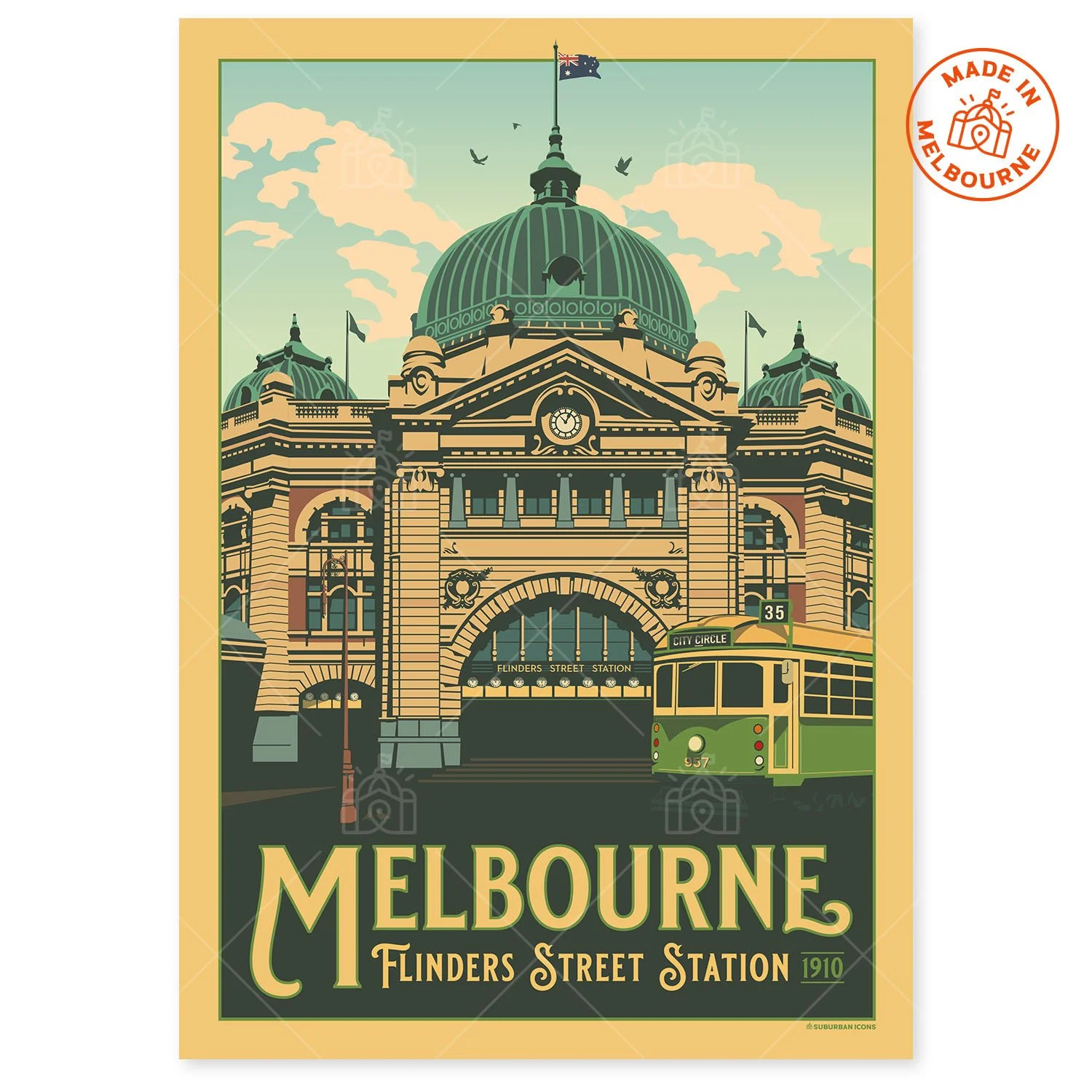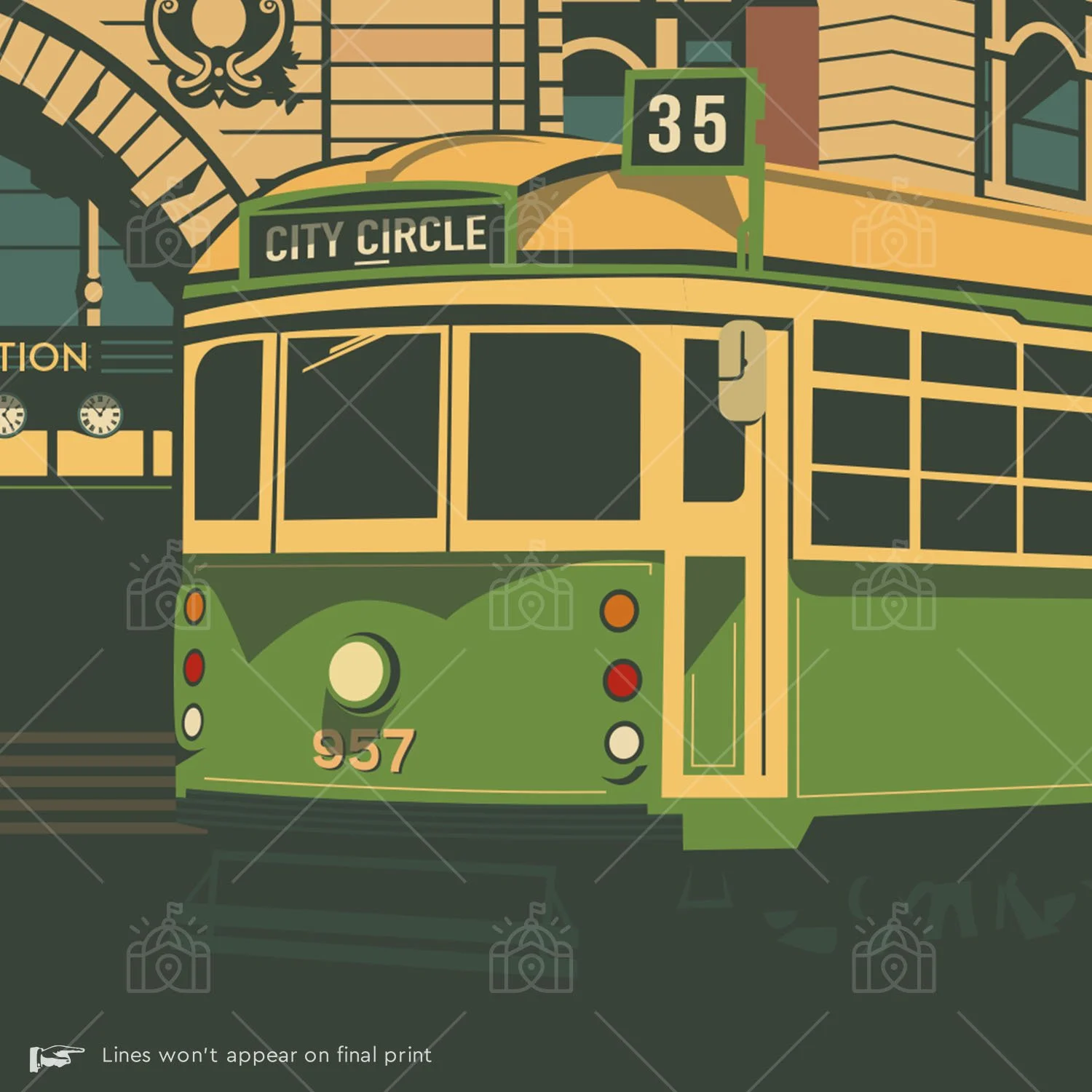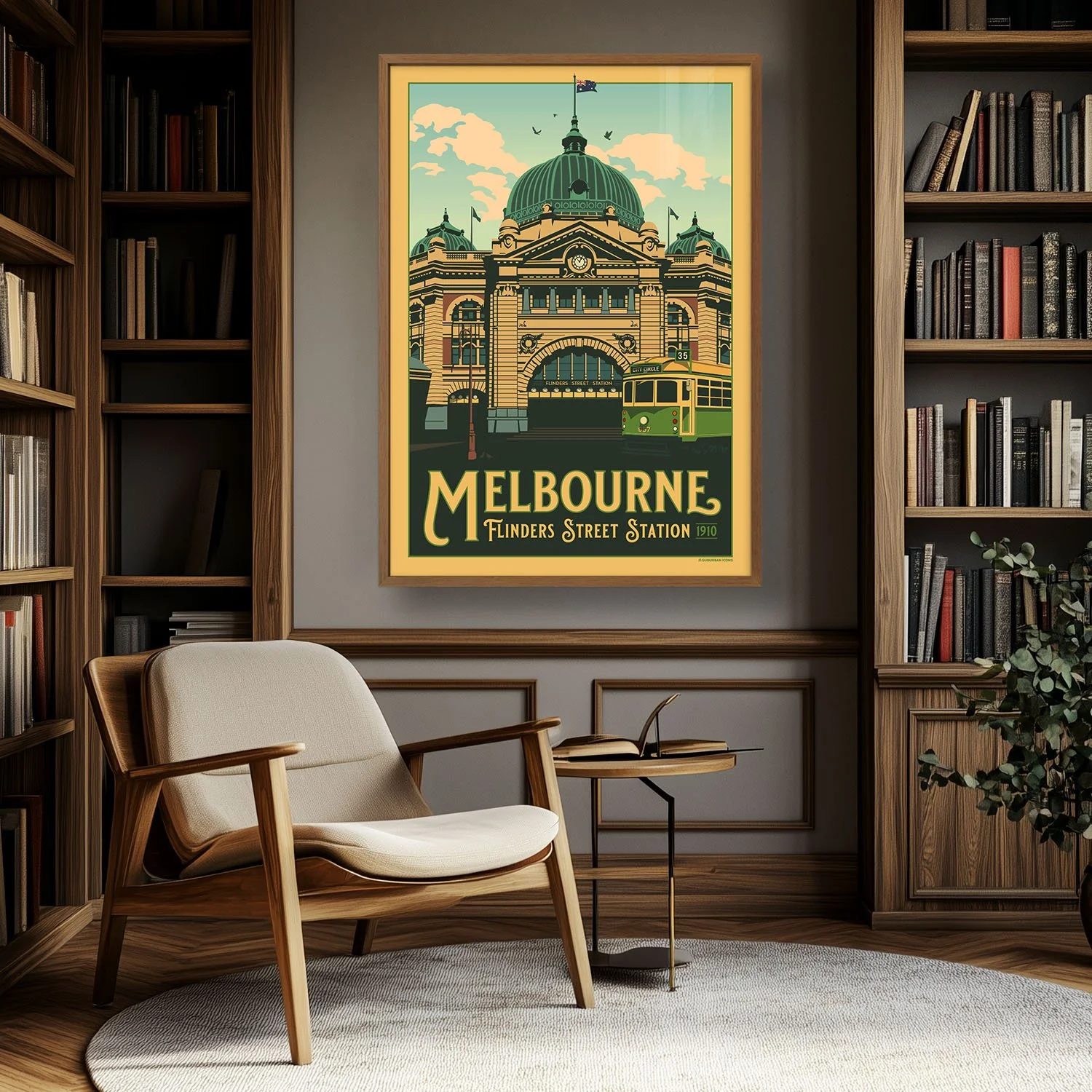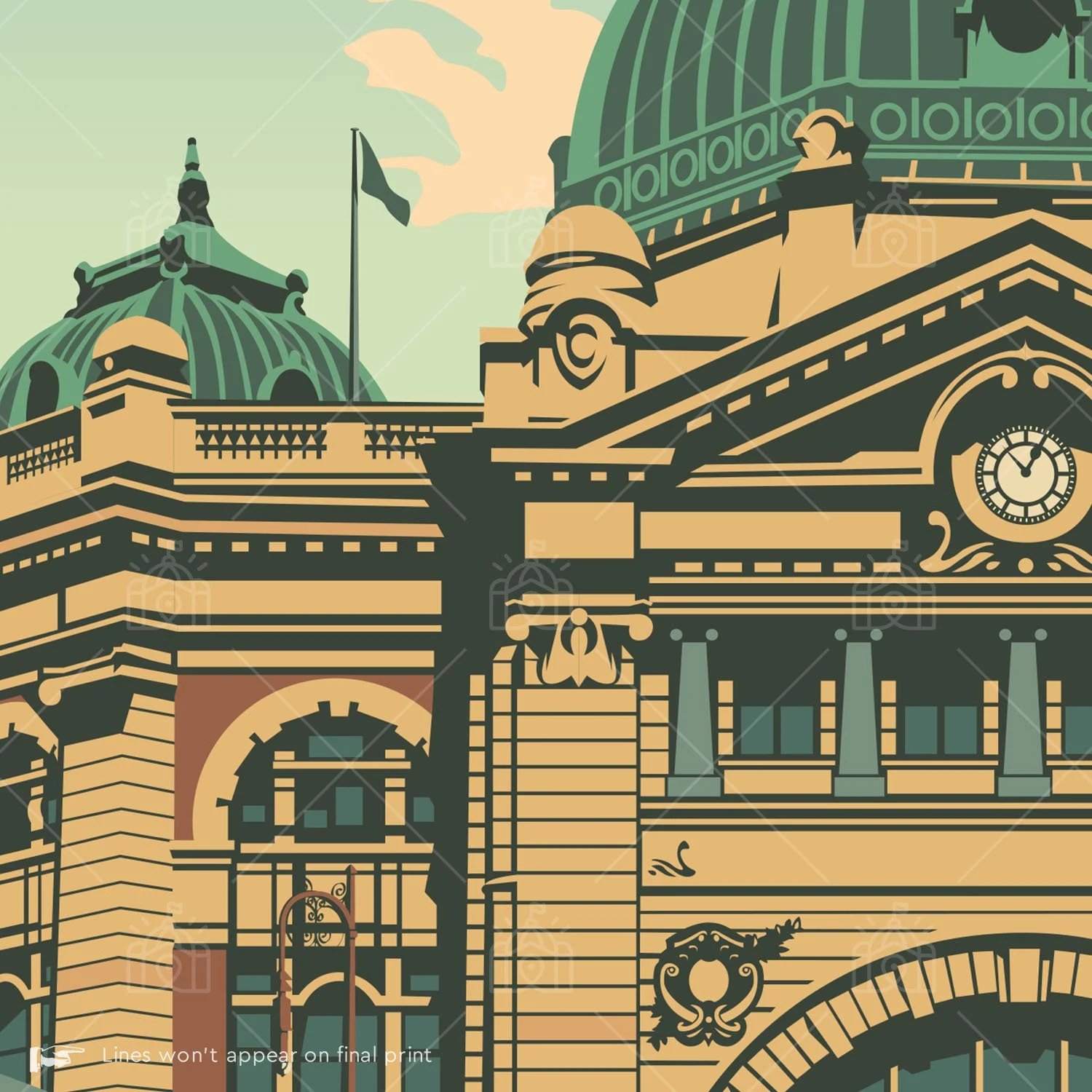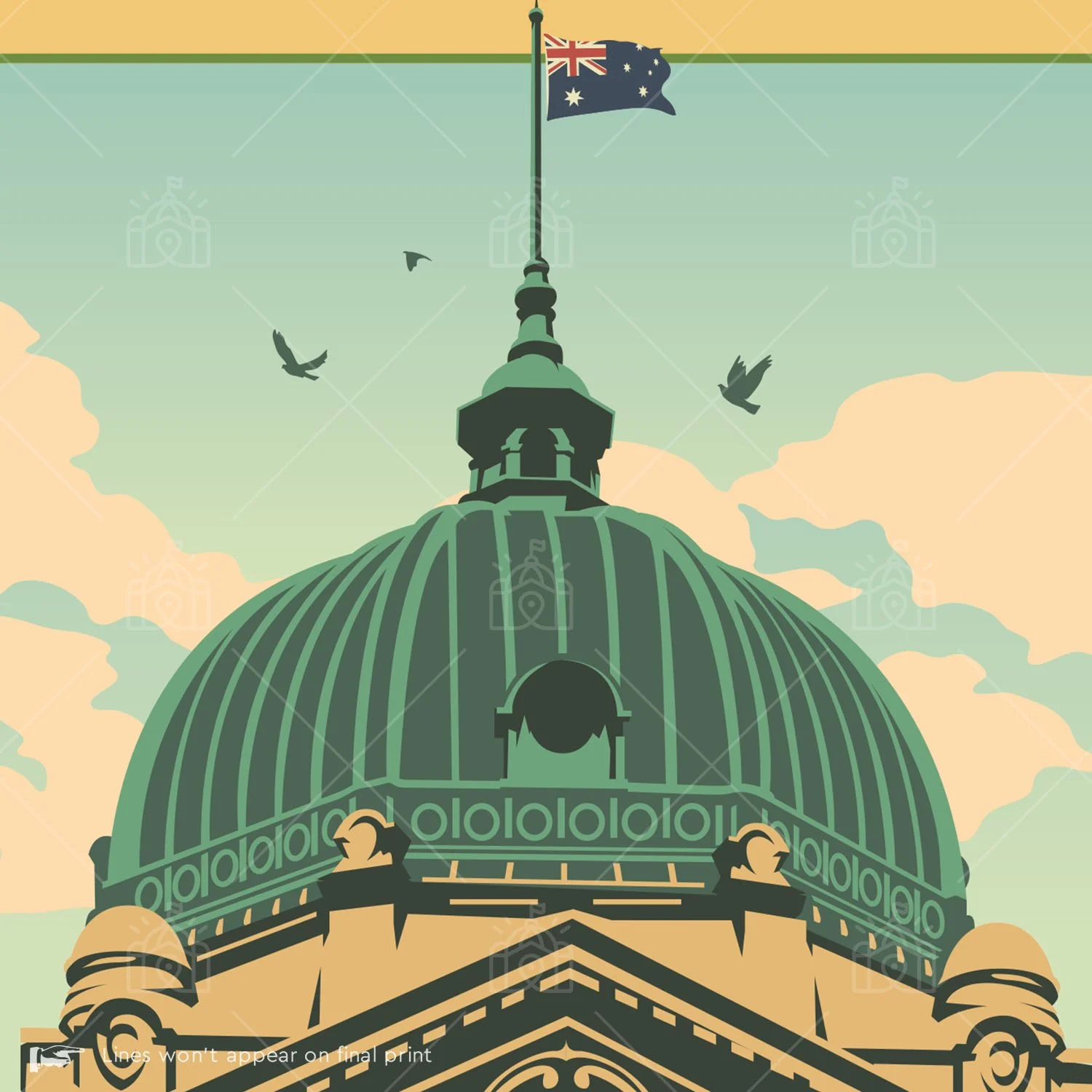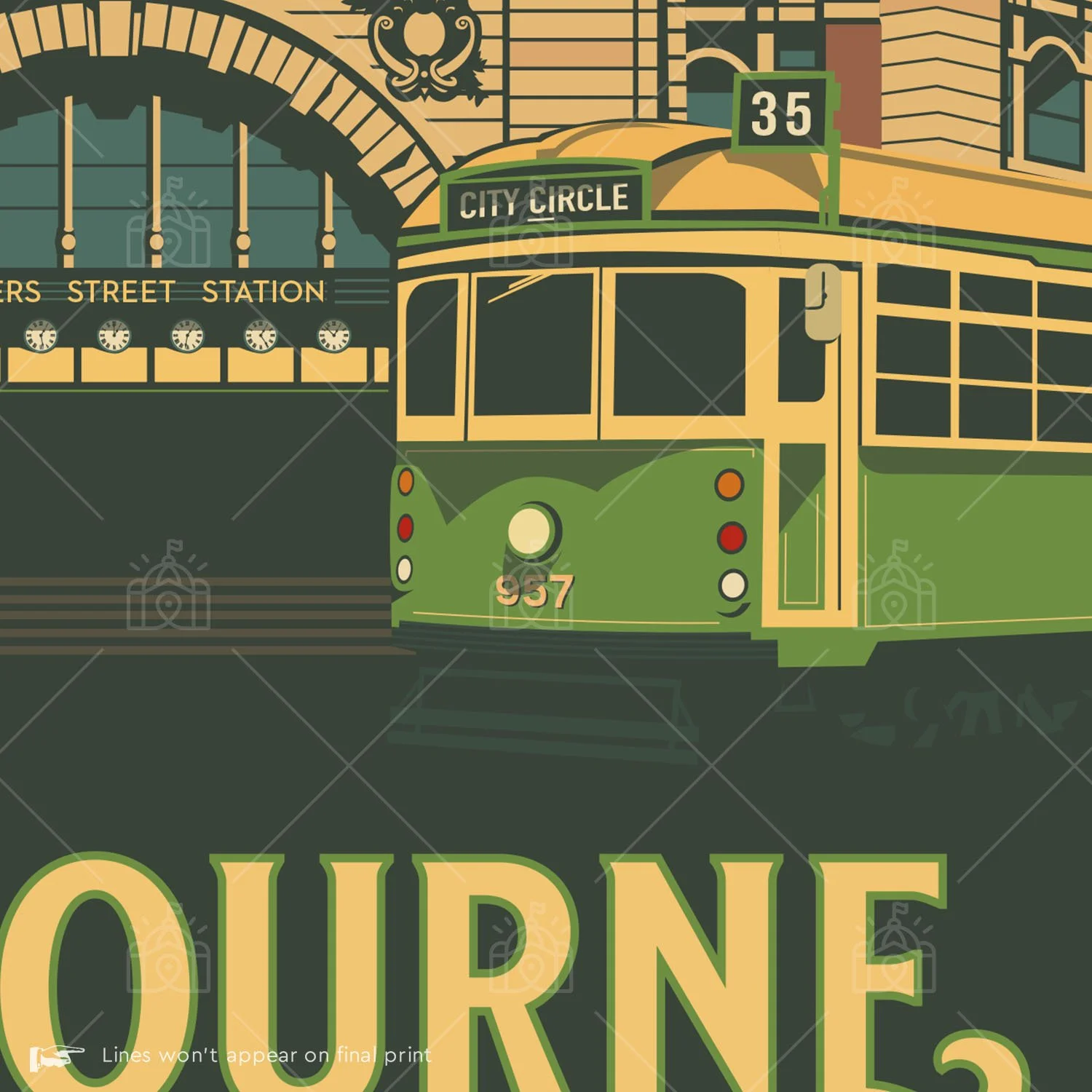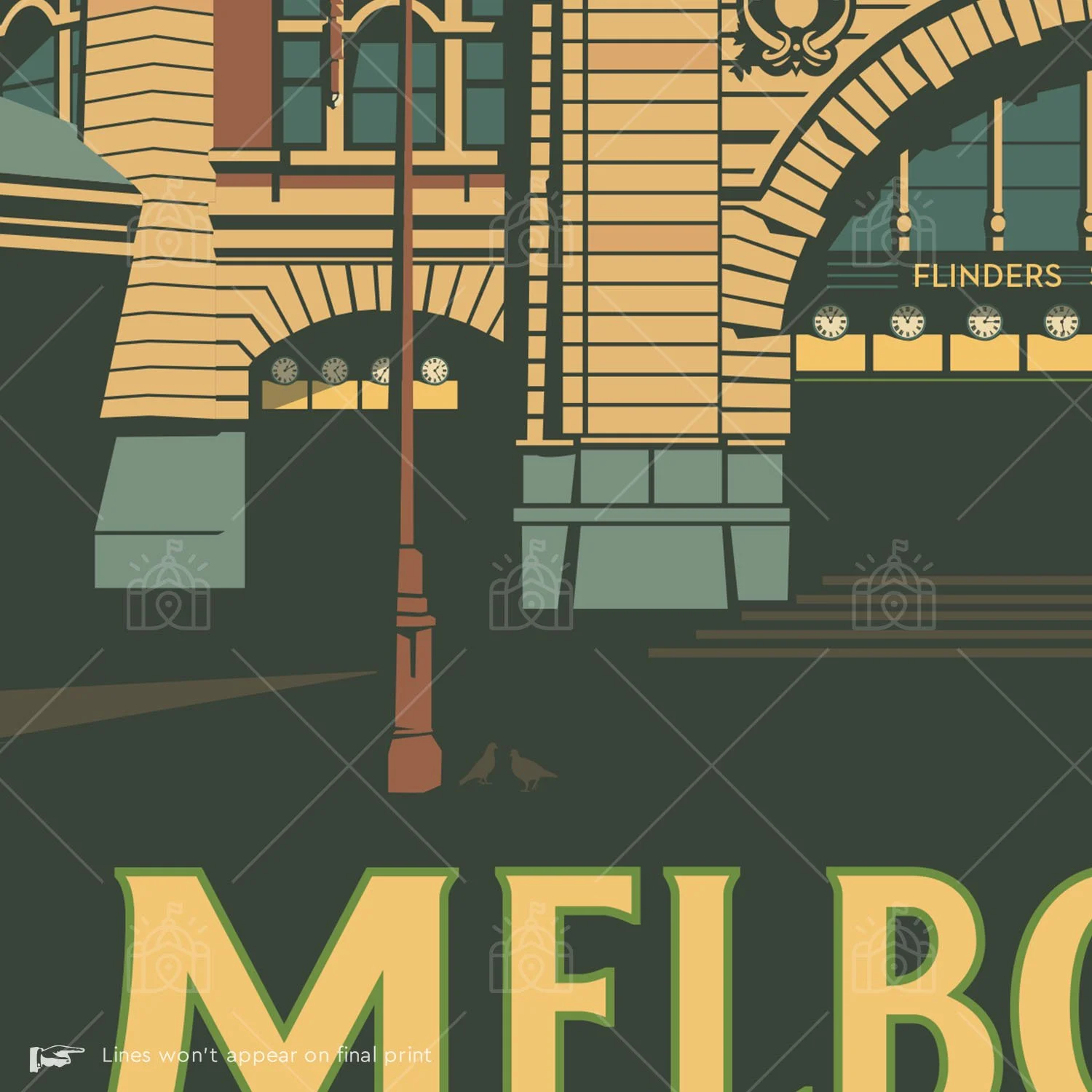
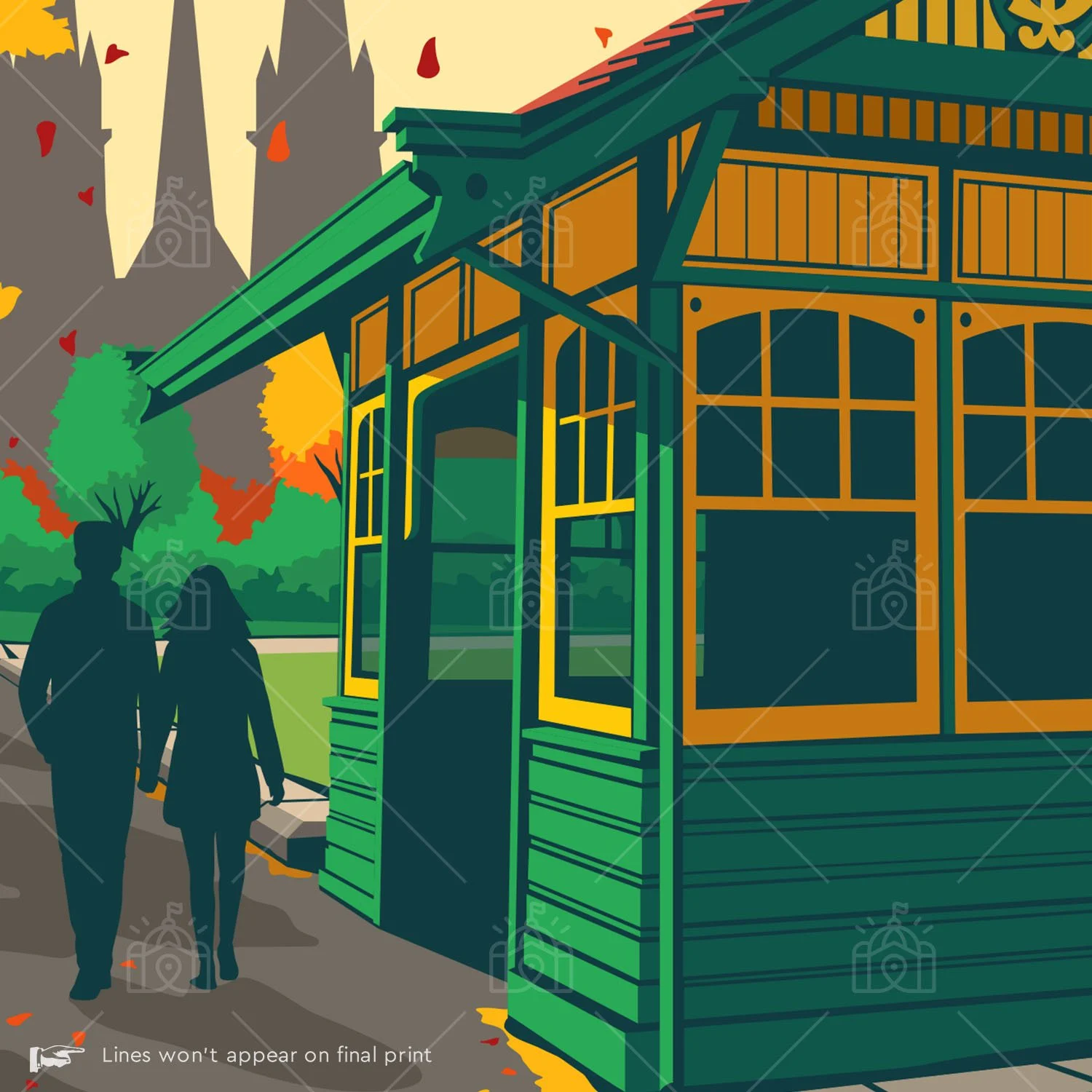


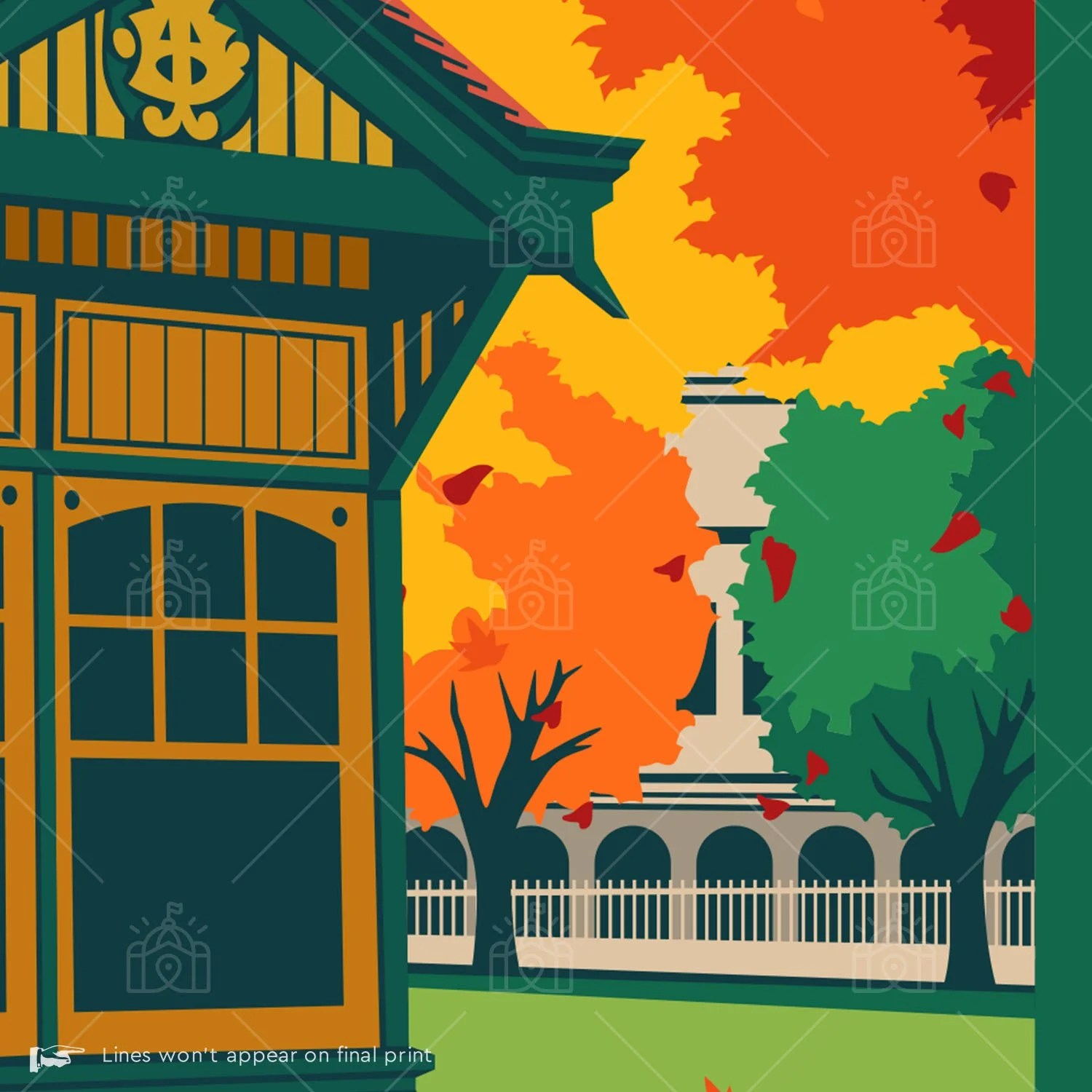
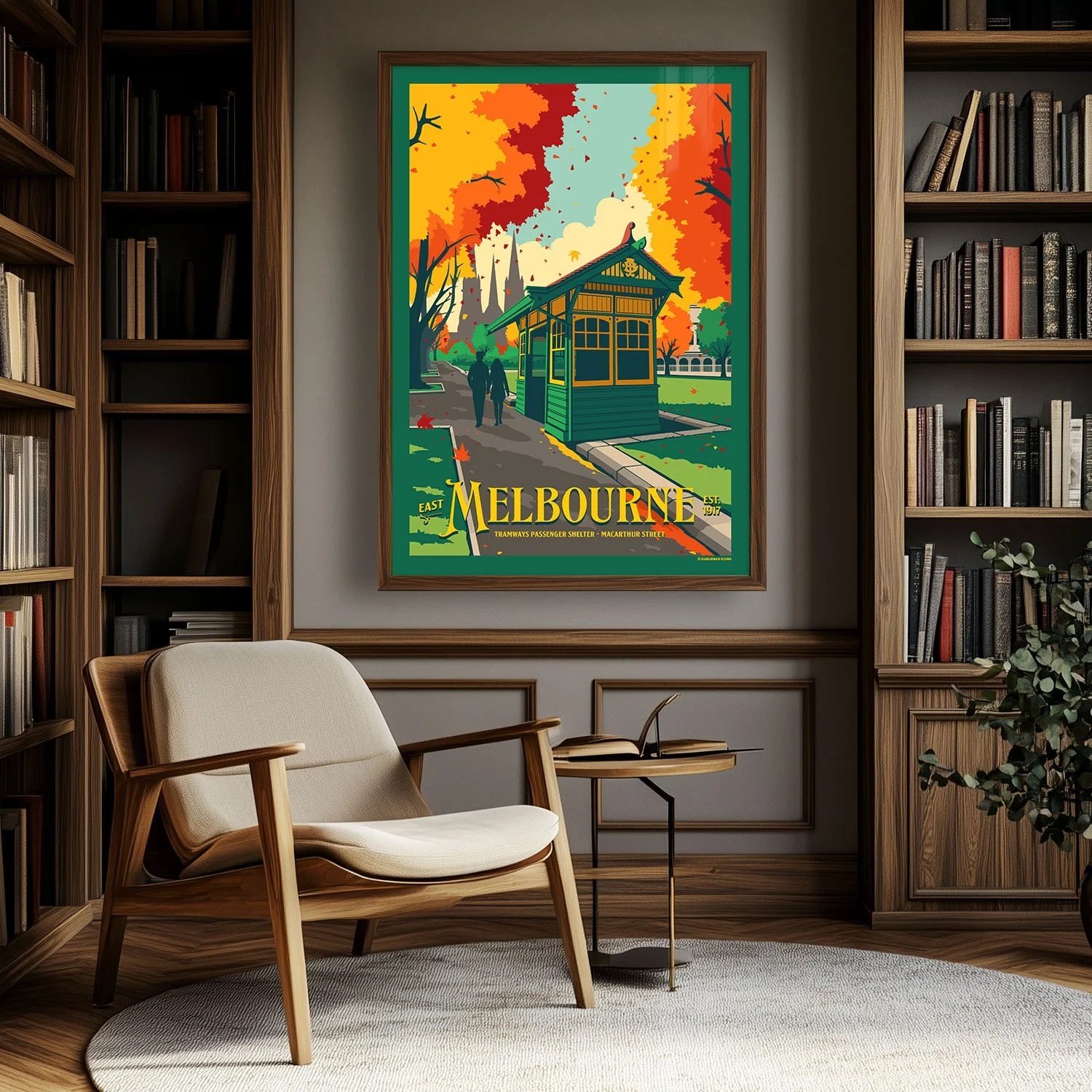

East Melbourne Tramways Passenger Shelter Suburban Icon
It’s a classic Melbourne scene: a couple strolling under golden autumn leaves on Macarthur Street, Saint Patrick’s Cathedral rising in the background — and nestled in the middle of it all, one of the last surviving Tramway Passenger Shelters in the city.
Built in 1917 and designed by architect (and former Lord Mayor) Frank Stapley, this heritage-listed tram stop is a survivor from the days when cable cars clanged through our growing city. The Macarthur Street shelter is one of only five remaining of the era when gripmen, steam engines, and city planning pioneers laid the tracks for modern Melbourne.
American-born Francis Boardman Clapp created the the Melbourne Tramway & Omnibus Company and introduced horse-drawn trams in 1877. From 1885 to 1940, cable trams were the city’s primary mode of transport — with over 75 kilometres of track and 600 car sets ferrying more than 100 million passengers a year.
By the early 1900s, rising costs and expanding suburbs prompted the introduction of electric trams. The Melbourne & Metropolitan Tramways Board (M&MTB) was formed in 1919 to unite the network, and Yarra Trams assumed control in 2004. Through it all, the Macarthur Street shelter has remained a charming, timber-framed witness to Melbourne’s transit evolution.
This Suburban Icons print captures the shelter as it stands today: quiet, elegant, and full of stories. Hang it in your home, your hallway, or even your shed — anywhere that could use a little extra character and a piece of Melbourne’s living history.
This artwork is available in A0, A1, A2, A3, A4. Professional framing is available on A0, A1 and A2 sizes via pick up only.
It’s a classic Melbourne scene: a couple strolling under golden autumn leaves on Macarthur Street, Saint Patrick’s Cathedral rising in the background — and nestled in the middle of it all, one of the last surviving Tramway Passenger Shelters in the city.
Built in 1917 and designed by architect (and former Lord Mayor) Frank Stapley, this heritage-listed tram stop is a survivor from the days when cable cars clanged through our growing city. The Macarthur Street shelter is one of only five remaining of the era when gripmen, steam engines, and city planning pioneers laid the tracks for modern Melbourne.
American-born Francis Boardman Clapp created the the Melbourne Tramway & Omnibus Company and introduced horse-drawn trams in 1877. From 1885 to 1940, cable trams were the city’s primary mode of transport — with over 75 kilometres of track and 600 car sets ferrying more than 100 million passengers a year.
By the early 1900s, rising costs and expanding suburbs prompted the introduction of electric trams. The Melbourne & Metropolitan Tramways Board (M&MTB) was formed in 1919 to unite the network, and Yarra Trams assumed control in 2004. Through it all, the Macarthur Street shelter has remained a charming, timber-framed witness to Melbourne’s transit evolution.
This Suburban Icons print captures the shelter as it stands today: quiet, elegant, and full of stories. Hang it in your home, your hallway, or even your shed — anywhere that could use a little extra character and a piece of Melbourne’s living history.
This artwork is available in A0, A1, A2, A3, A4. Professional framing is available on A0, A1 and A2 sizes via pick up only.
© 2025 Historic Prints / Suburban Icons, part of The Brand Garage, Melbourne. All images and intellectual property remain the property of Historic Prints. No part of this artwork may be copied, reproduced, or distributed without prior permission.

